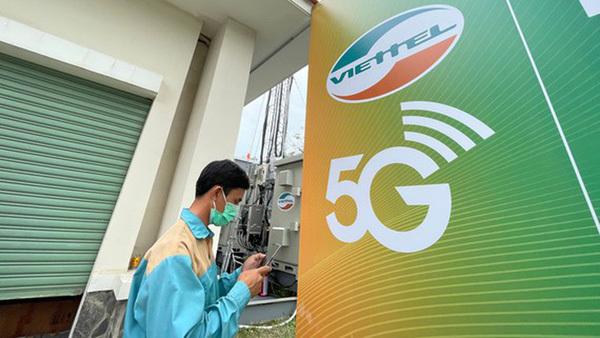
However, due to certain infrastructure limits, the target is just to offer these services to 25 percent of the national population in 2025.
Vietnam is now enjoying a 99.8 percent 4G coverage nationwide, with 5G technology successfully piloted by the three major carriers of Viettel, VNPT and MobiFone in 16 cities and provinces (Hanoi, Ho Chi Minh City, Da Nang City, Hai Phong City, Can Tho City, Bac Ninh, Bac Giang, Binh Phuoc, Thua Thien – Hue, Quang Ninh, Vinh Phuc, Thai Nguyen, Dong Nai, Binh Duong, Ben Tre, and Ba Ria – Vung Tau).
It is now ready technically for the official commercialization of services using this lucrative 5G technology to bring about more unforgettable experiences to mobile users.
MIC reported that domestic 5G equipment now ranges from the core, transmission, and access networks. They have been effectively exploited in the piloting schemes lately. Particularly, Vietnam has finished installing 5G stations using Open Radio Access Network (ORAN) technology with the download and upload speeds of 900Mbps and 60Mbps respectively. This is one major improvement to boost 5G device research and manufacturing in Vietnam to serve commercialization tasks in 2022.
Nevertheless, major Vietnamese carriers are still reluctant since the low demands of 5G services from domestic users cannot compensate for their large investment amount. What is more, as there is not specific data package during the piloting time, it is not easy for mobile network providers to exactly evaluate the real demands of the market.
Minister of Information and Communications Nguyen Manh Hung stated in the recent ITU Digital World 2021 event that Vietnam is calling upon the cooperation of all carriers in the first stage of 5G development in the country, which has been wholeheartedly supported by VNPT.
Accordingly, each carrier should cover 25 percent of the national surface area and allow customers of others to use its own facilities in order to reduce investment. This will result in a full coverage of 5G technology nationwide in just one year.
During their piloting periods for 5G technology, Viettel, VNPT and MobiFone have already adopted this practice. Therefore, if all agree, this solution to formally commercialize 5G is absolutely feasible, with thousands of new shared BTS installed throughout the country.
MobiFone proposed only sharing 5G infrastructure among carriers in remote areas with low demand for the sake of cost saving. In addition, it is necessary to organize effective propaganda campaigns so that the public support telecoms development according to regulations, and the Public Telecoms Fund is more wisely used for remote areas.
Director of Qualcomm Vietnam – Laos – Cambodia Thieu Phuong Nam suggested that as the cost of Base Transceiver Stations (BTS) are quite reasonable at present, it is a good time to invest in them, along with the reuse of existing telecoms facilities for the 4G technology.
With an impressive increase of smartphone owners from 59.2 percent in 2018 to 75 percent in 2021, with such a high demand of services for mobile devices in Vietnam, and with MIC’s determination to stop outdated mobile technologies in 2022, it is expected that from 2023 all Vietnamese people will switch to smartphones with new technologies to access the Internet.
Obviously, 5G commercialization in Vietnam is unavoidable.


